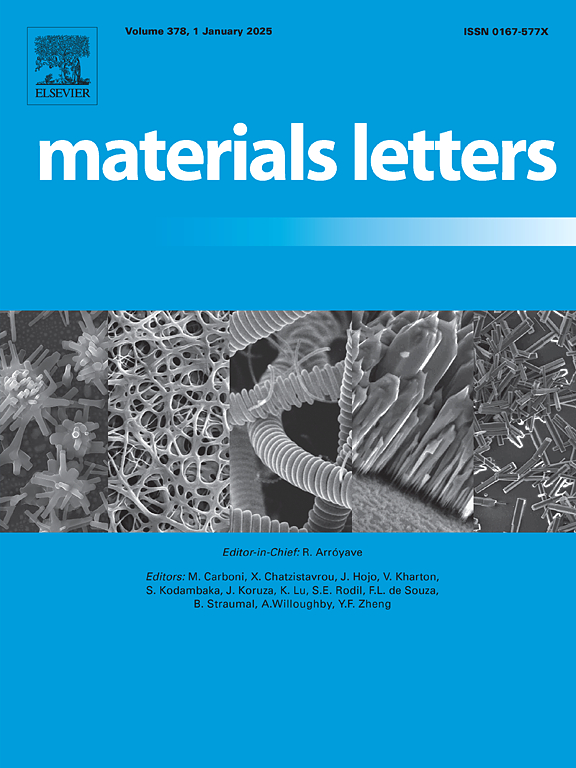Multi-pass scratch properties of titanium and vanadium-doped diamond-like carbon coatings applied on commercially pure titanium under different tribological environments: Dry, bio-aqueous, and lubricated conditions
IF 2.7
4区 材料科学
Q3 MATERIALS SCIENCE, MULTIDISCIPLINARY
引用次数: 0
Abstract
This study examined the influence of titanium (Ti) and vanadium (V) doping on the mechanical performance and scratch resistance of diamond-like carbon (DLC) coatings applied to commercially pure titanium (Cp-Ti) substrates. The coatings were produced using physical vapor deposition (PVD), and scratch tests were performed under dry, Ringer’s solution, and lubricated conditions. Structural and mechanical characteristics were assessed via X-ray Diffraction (XRD), X-ray Photoelectron Spectroscopy (XPS), Scanning Electron Microscopy (SEM), and microhardness tests. Surface hardness, residual stress, and coating thickness showed notable changes with Ti and V incorporation compared to untreated Cp-Ti. Scratch resistance varied with environment, with lubricated conditions offering the highest resistance and producing narrower scratches than those in Ringer’s solution. These outcomes were linked to the uniform carbide distribution and increased compressive residual stresses in the doped coatings.
不同摩擦学环境:干燥、生物水和润滑条件下,钛和掺钒类金刚石涂层在商业纯钛上的多道划痕性能
本研究考察了钛(Ti)和钒(V)掺杂对类金刚石(DLC)涂层的力学性能和抗划伤性能的影响,这些涂层应用于商业纯钛(Cp-Ti)基体。涂层采用物理气相沉积(PVD)技术制备,并在干燥、林格溶液和润滑条件下进行划痕测试。通过x射线衍射(XRD)、x射线光电子能谱(XPS)、扫描电子显微镜(SEM)和显微硬度测试评估了结构和力学特性。与未处理的Cp-Ti相比,掺入Ti和V后表面硬度、残余应力和涂层厚度发生了显著变化。抗划痕性随环境而变化,润滑条件下提供最高的阻力,产生比林格氏溶液更窄的划痕。这些结果与掺杂涂层中均匀的碳化物分布和增加的压缩残余应力有关。
本文章由计算机程序翻译,如有差异,请以英文原文为准。
求助全文
约1分钟内获得全文
求助全文
来源期刊

Materials Letters
工程技术-材料科学:综合
CiteScore
5.60
自引率
3.30%
发文量
1948
审稿时长
50 days
期刊介绍:
Materials Letters has an open access mirror journal Materials Letters: X, sharing the same aims and scope, editorial team, submission system and rigorous peer review.
Materials Letters is dedicated to publishing novel, cutting edge reports of broad interest to the materials community. The journal provides a forum for materials scientists and engineers, physicists, and chemists to rapidly communicate on the most important topics in the field of materials.
Contributions include, but are not limited to, a variety of topics such as:
• Materials - Metals and alloys, amorphous solids, ceramics, composites, polymers, semiconductors
• Applications - Structural, opto-electronic, magnetic, medical, MEMS, sensors, smart
• Characterization - Analytical, microscopy, scanning probes, nanoscopic, optical, electrical, magnetic, acoustic, spectroscopic, diffraction
• Novel Materials - Micro and nanostructures (nanowires, nanotubes, nanoparticles), nanocomposites, thin films, superlattices, quantum dots.
• Processing - Crystal growth, thin film processing, sol-gel processing, mechanical processing, assembly, nanocrystalline processing.
• Properties - Mechanical, magnetic, optical, electrical, ferroelectric, thermal, interfacial, transport, thermodynamic
• Synthesis - Quenching, solid state, solidification, solution synthesis, vapor deposition, high pressure, explosive
 求助内容:
求助内容: 应助结果提醒方式:
应助结果提醒方式:


